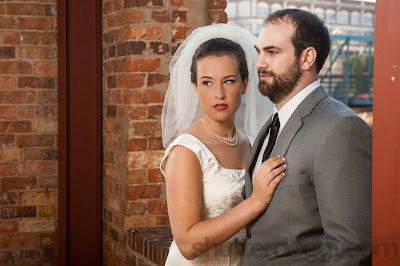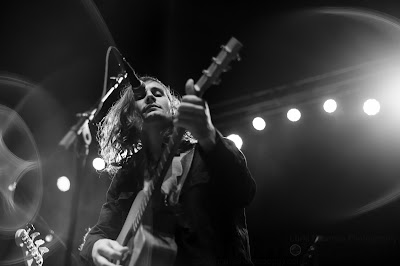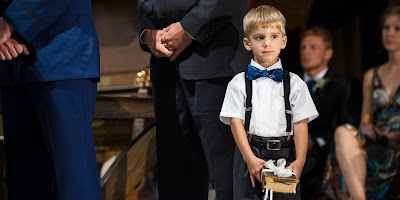So Nikon debuted their new camera body branded the Df. It is an obvious and deliberate departure from the design evolution of modern cameras. I think it is fair to say that Fuji should be credited with this trend with the huge success of the X100/
X100s (and to a smaller degree, with the
X-Pro 1) which harken back to the basics of the photography experience but still bristling with new technology.
Nikon's new Df has sparked a visceral reaction throughout the online photography circles. One photographer, who I respect quite a bit, Lee Morris wrote on fstoppers.com that the Df "
Represents Everything Wrong with Photography" which is quite a statement - and he makes some good points. (Since then, Lee has produced what may be the
best review of it in the history of camera reviews)
His critique sparked such a reaction from Don Giannatti (aka "wizwow" - I guess all the good photog internet names where taken) that he felt compelled to
write a response claiming that it is the existence of photo writers that we should be questioning. He makes some excellent points as well.
Fearing Wizwow's wrath and weighing in on this topic - thus becoming part of the "photo writer" community (which he is also a member of) - I have some things I'd like to get off my chest regarding the direction of Nikon in general using the Df as a springboard or lonely straw that broke my photo camel's back.
Prologue
First, just a little about me in case this is the first time you've read anything from me about photography. I've been shooting professionally for about 7 years. I have not made the full-time leap into the industry for a variety of reasons so a Lee Morris and Don Giannatti may rightfully label me as a high-end enthusiast, so be it. But, I believe there are a LOT of people like me out there, pursuing their path in photography with one foot planted on the dock of career safety and one dangling in the lake of uncertain creativity. Regularly reading Zack Arias' "
Ask Me Anything" project on Tumblr reinforces my theory about how many of us are out there.
I have clients that I must delight same as any other photographer, full-time or not, but I haven't taken the plunge like many professionals, so I could rightfully be judged as not having as much (or enough) skin in the game as those guys. But, I have to buy gear like anyone else. I don't go into debt for my side business. I decided long ago, that if this interest couldn't at least pay for itself then going into debt for it was a huge mistake. This approach is starting to pay off. I'm able to stay current on my photo gear and get the results I, and my clients want, but it's certainly modest and grounded in reality.
This brings me to my relationship with Nikon and why I think what I do about what they have done well and what they have not. I started out buying a few of the Panasonic FZ series cameras but kept getting tired of buying a whole new camera to keep up with what I wanted to do. So I purchased my first dSLR, a refurbished Nikon D50 and some of the lenses I thought I needed. I got the Tamron 28-75 f2.8 (which I still have) and the original Nikon 18-200mm, which I sold after about 2 years. Once I started making money from my photography, I purchased the D200. Things started taking off and I then moved up to the D700. The D700 was my go-to workhorse for many many years. I got to the point where I really needed to have a legit back-up because I was working so often and my clients depended on me.
In my opinion, the D700 might be the best camera feature-for-feature-dollar-for-dollar Nikon has made since they started making dSLR's. When I was in the market for a new body my choice was either the D600 or the
D7100. I decided to go with the D7100 even though I was really just looking for a modern version of the D700 - my reasons will pan out.
Some would say that the D800 is the legitimate replacement for the D700 but it certainly wasn't for me. The price and the file sizes as a result of the astronomic resolution simply eliminated this as an option for me. Instead of threading the needle of features like they did with the D700, Nikon decided to raise the bar very high with the D800 and then offer a fairly hobbled, entry level into full frame with the D600. The D800 made lucrative pros swoon and the D600 made a lot of pro-sumers glad but a for people in my sector of the business seemed to be left in a no-man's-land.
All I wanted was a full-frame option with the 51 point focus system that has been the standard for mid to high-end dSLRs for years and reasonable resolution (more than 12 but no more than 24 megapixels). I don't need 8 fps just good image quality. Combine this with the PR disaster that the D600 had with oil on the sensor from a defective shutter issue and the way they handled it with customers, the D7100 seemed the only way to go. I got everything I needed except full frame. I do miss the manual controls dedicated to things like ISO/Quality/WB, but those are not included on the D600/
610 either. So, thanks again Nikon.
Flashes
The last Nikon brand flash I purchased was the SB-800. It was/is about everything you would ever want from a flash. My lighting setup comprises of 3 strobes. When my SB-800 tube died, I went shopping for a replacement. The SB-900's had come and gone and I was never tempted to even consider them given the price and the issue with overheating. Then, just like with the D600/610, they never really made it up to the suckers that bought the SB-900 and just released the
SB-910, which solved the overheating issue but still priced higher than a
Paul C Buff Einstein unit.
Are they insane?
Of course, I could consider the SB-700, which is actually fairly reasonable for someone accustomed to the SB-800's but with no sync port for my PocketWizards, Nikon has crippled yet another fine product hoping you opt for the overpriced high-end equipment. Are you seeing a pattern here?
I ended up getting the new Yongnuo 560II flashes. I got three of them for less than half the price of a Nikon SB-910. I've used these a LOT. As long as I take good care of them, they seem to be performing really well. I will probably, eventually, replace them with the
LumoPro LP180's if any of them die since my only real concern with them is durability and service.
The Nikon Df
So now to bring it full circle. You can understand my excitement regarding the announcement of a new full-frame body from Nikon. This could be the answer I've been looking for! Wrong.
- Again with the inferior 39 point focussing
- Virtually, same price as D800 with less resolution and features
- Convoluted controls
- I don't want to grow a handlebar mustache
What is Nikon doing right (if anything)?
My only praise of Nikon lately is: lenses. They've released some really interesting lenses that appeal directly to the group I consider myself in. New products like the
35mm f1.8 and
85mm f1.8 are top notch products and the only evidence that Nikon has been paying any attention to the needs of my sector of the market. But what the hell am I supposed to put these lenses on?! If Nikon had just put the sensor from the D600/610 in the exact same body as the D700, I would be singing from the mountain top. Instead, I'm ranting on a blog.
Make no mistake, I'm not opposed to paying for what you get. I've been burned over and over by "bargain" gear (like most of you probably have been). I'm not saying the Df or the D800 aren't worth what Nikon is charging for them. My point is that there is a large sector of the market that was so superbly served by a product like the D700 that it frustrates me that Nikon doesn't continue on that line - and as far as I know, the D700 was one of the most successful models offered by Nikon. I could be wrong but I certainly, personally know a lot of fellow owners.
Instead, they seem to be pushing people up or down.
Enter Fujifilm
During all this time of weighing options with Nikon, Fujifilm slowly starts dribbling out product after product that seems to be just what people are wanting. The X100 came out and people like Zack Arias and David Hobby start going on and on about how fun it is to shoot even with all it's quirks. I dismissed this as an expensive toy that pros like to pick up so they don't have to heave their medium format digital camera bodies around. Then something strange and weird happened: Fuji started listening to what everyone wanted and released firmware updates to address some of the issues and ultimately a successor, the X100s which seemed to address.... all of them. This even prompted Zack Arias to
declare the end of the dSLR.
This seemed pretty bold to me, and a lot of people, at the time. Then Fuji released the X-Pro1 (technically, the X-Pro 1 was before the X100s but not many people really noticed it), then the X-E1, then the X-M1 and on and on, lowering the prices for each model giving customers the ability to choose what features they were willing to pay to enter the XF platform and the collection of gem lenses.
But all the while, I kept crunching the numbers of a scenario of me selling off my Nikon equipment and moving over to Fuji and the performance issues regarding focusing still nagged at me. Am I really going to show up at a professional shoot with a X-E1 in my hand? "No" I answered to myself. Then, they released the X-E2 and, just recently the X-T1 addressing each issue I've had for not switching.
So this is what it's like to have a company desperately want your business? Strange - I'm not used to this.
I still haven't committed to the jump. But I have committed to picking the right test event to rent some Fujifilm equipment to see how it performs at weddings trying to get candid shots in a split second and, more importantly, get the lead singer in a poorly lit concert. If it comes close. I'm jumping.
Lighter weight, better skin tones and similar performance, how can I not? Am I crazy? You tell me.



























































